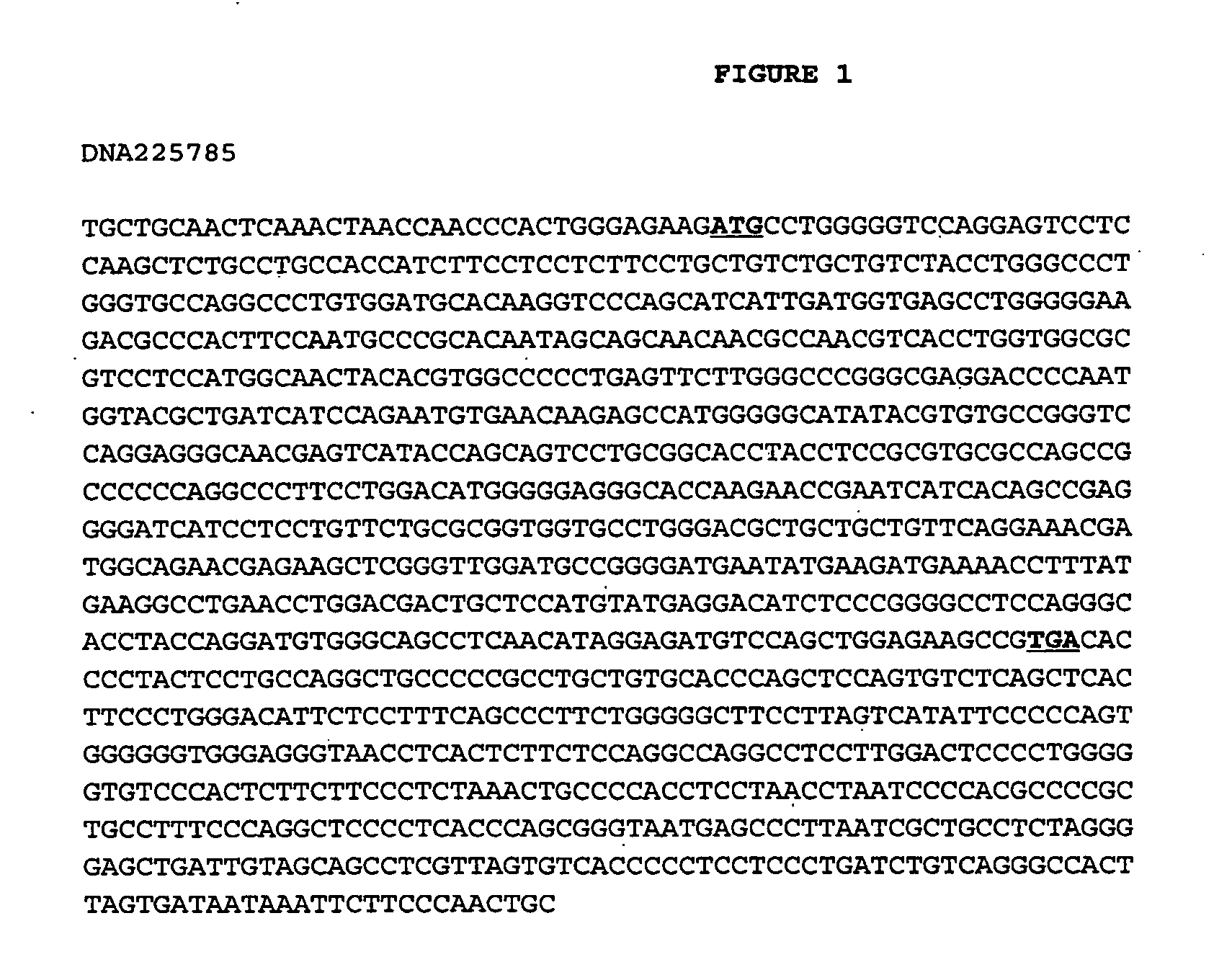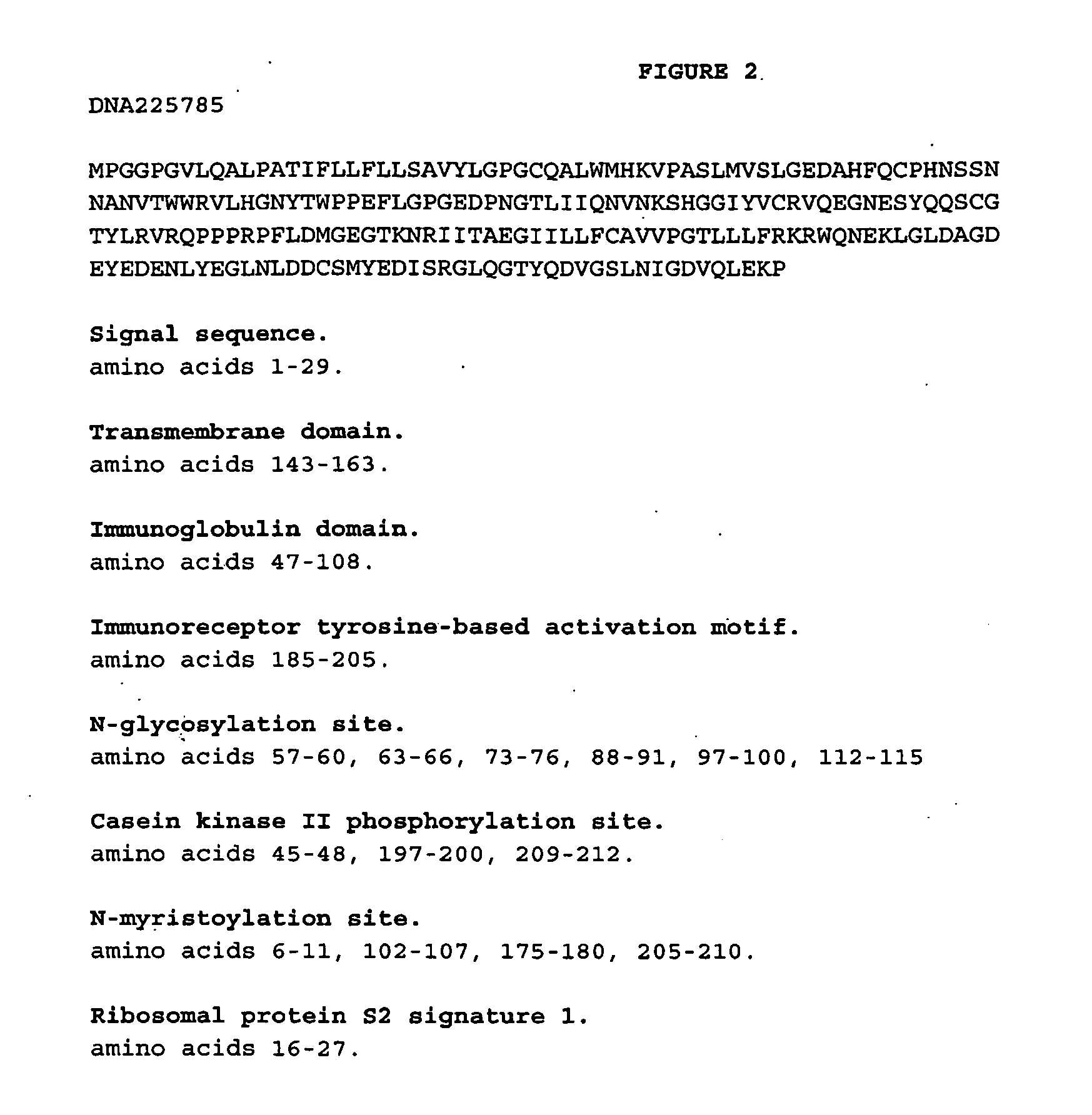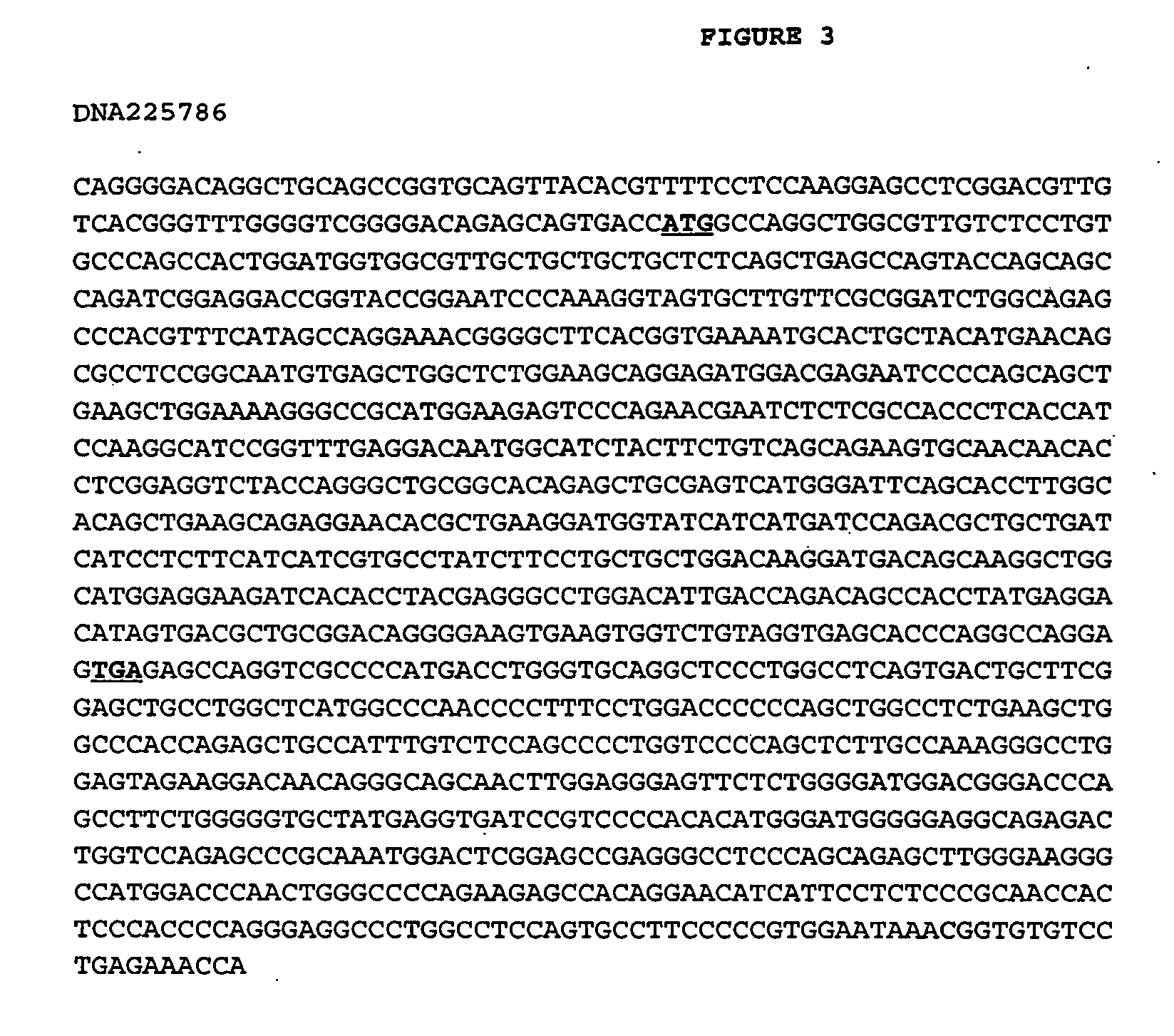Compositions and Methods for the Treatment of Tumor of Hematopoietic Origin
a hematopoietic origin and tumor technology, applied in the field of compositions and methods for the treatment of tumors of hematopoietic origin, can solve the problems of potential problems such as the inability to engineer in cysteine thiol groups by the mutation of various amino acid residues of a protein to cysteine amino acids, and the inability to separate and characterize antibody-drug conjugate species by analytical and preparative methods
- Summary
- Abstract
- Description
- Claims
- Application Information
AI Technical Summary
Problems solved by technology
Method used
Image
Examples
example 1
Microarray Data Analysis of TAHO Expression
[0854]Microarray data involves the analysis of TAHO expression by the performance of DNA microarray analysis on a wide a variety of RNA samples from tissues and cultured cells. Samples include normal and cancerous human tissue and various kinds of purified immune cells both at rest and following external stimulation. These RNA samples may be analyzed according to regular microarray protocols on Agilent microarrays.
[0855]In this experiment, RNA was isolated from cells and cyanine-3 and cyanine-5 labeled cRNA probes were generated by in vitro transcription using the Agilent Low Input RNA Fluorescent Linear Amplification Kit (Agilent). Cyanine-5 was used to label the samples to be tested for expression of the PRO polypeptide, for example, the myeloma and plasma cells, and cyanine-3 was used to label the universal reference (the Stratagene cell line pool) with which the expression of the test samples were compared. 0.1 g-0.2 g of cyanine-3 and ...
example 2
Quantitative Analysis of TAHO mRNA Expression
[0866]In this assay, a 5′ nuclease assay (for example, TaqMan®) and real-time quantitative PCR (for example, Mx3000P™ Real-Time PCR System (Stratagene, La Jolla, Calif.)), were used to find genes that are significantly overexpressed in a specific tissue type, such as B cells, as compared to a different cell type, such as other primary white blood cell types, and which further may be overexpressed in cancerous cells of the specific tissue type as compared to non-cancerous cells of the specific tissue type. The 5′ nuclease assay reaction is a fluorescent PCR-based technique which makes use of the 5′ exonuclease activity of Taq DNA polymerase enzyme to monitor gene expression in real time. Two oligonucleotide primers (whose sequences are based upon the gene or EST sequence of interest) are used to generate an amplicon typical of a PCR reaction. A third oligonucleotide, or probe, is designed to detect nucleotide sequence located between the t...
example 3
[0872]In situ hybridization is a powerful and versatile technique for the detection and localization of nucleic acid sequences within cell or tissue preparations. It may be useful, for example, to identify sites of gene expression, analyze the tissue distribution of transcription, identify and localize viral infection, follow changes in specific mRNA synthesis and aid in chromosome mapping.
[0873]In situ hybridization was performed following an optimized version of the protocol by Lu and Gillett, Cell Vision 1:169-176 (1994), using PCR-generated 33P-labeled riboprobes. Briefly, formalin-fixed, paraffin-embedded human tissues were sectioned, deparaffinized, deproteinated in proteinase K (20 g / ml) for 15 minutes at 37° C., and further processed for in situ hybridization as described by Lu and Gillett, supra. A [33-P] UTP-labeled antisense riboprobe was generated from a PCR product and hybridized at 55° C. overnight. The slides were dipped in Kodak NTB2 nuclear trac...
PUM
| Property | Measurement | Unit |
|---|---|---|
| Fraction | aaaaa | aaaaa |
| Fraction | aaaaa | aaaaa |
| Electric charge | aaaaa | aaaaa |
Abstract
Description
Claims
Application Information
 Login to View More
Login to View More - R&D
- Intellectual Property
- Life Sciences
- Materials
- Tech Scout
- Unparalleled Data Quality
- Higher Quality Content
- 60% Fewer Hallucinations
Browse by: Latest US Patents, China's latest patents, Technical Efficacy Thesaurus, Application Domain, Technology Topic, Popular Technical Reports.
© 2025 PatSnap. All rights reserved.Legal|Privacy policy|Modern Slavery Act Transparency Statement|Sitemap|About US| Contact US: help@patsnap.com



